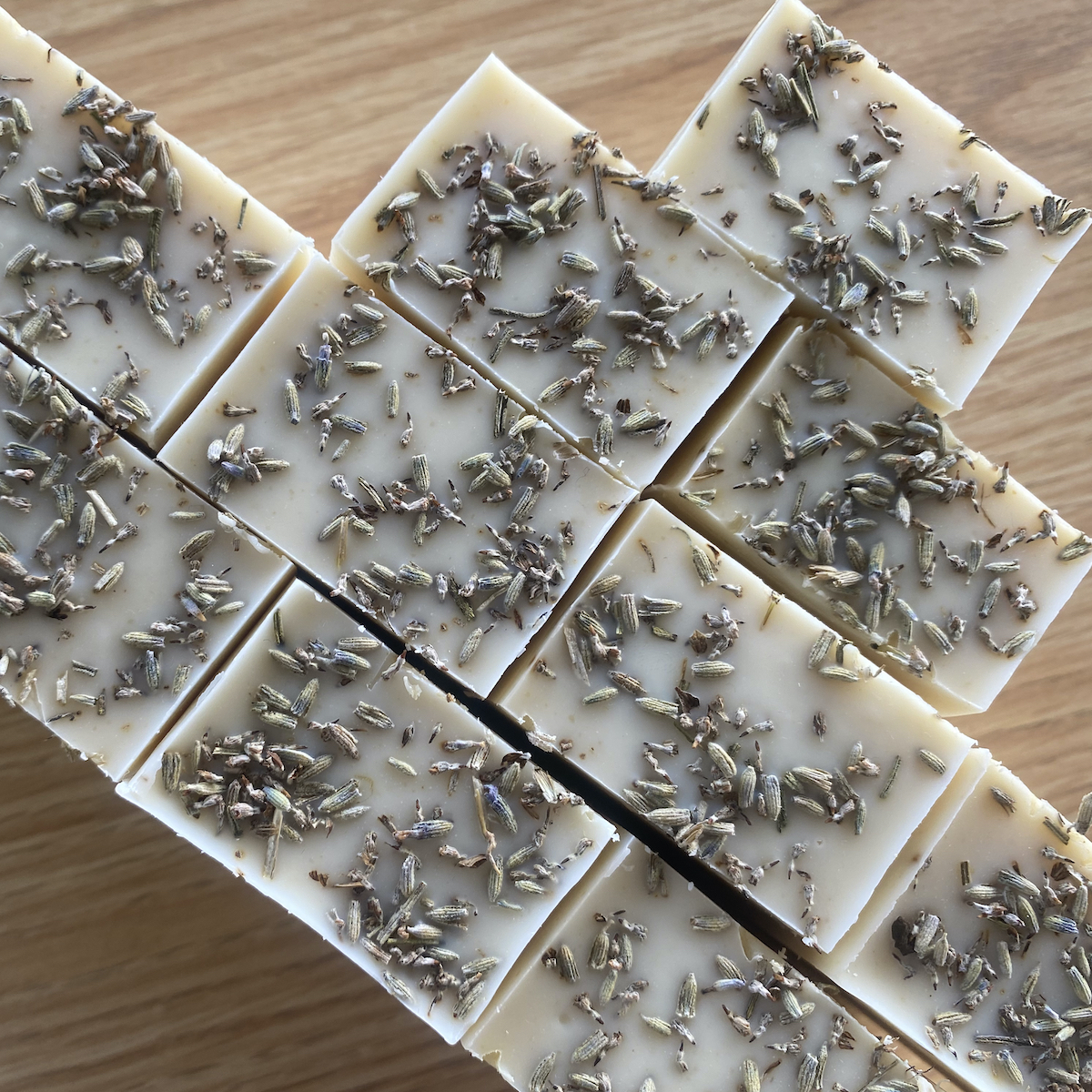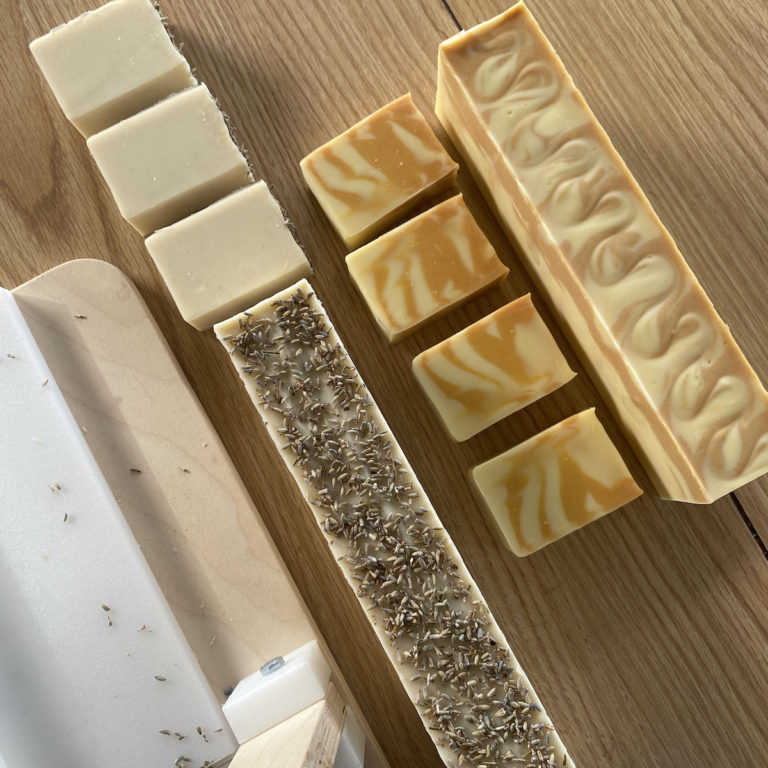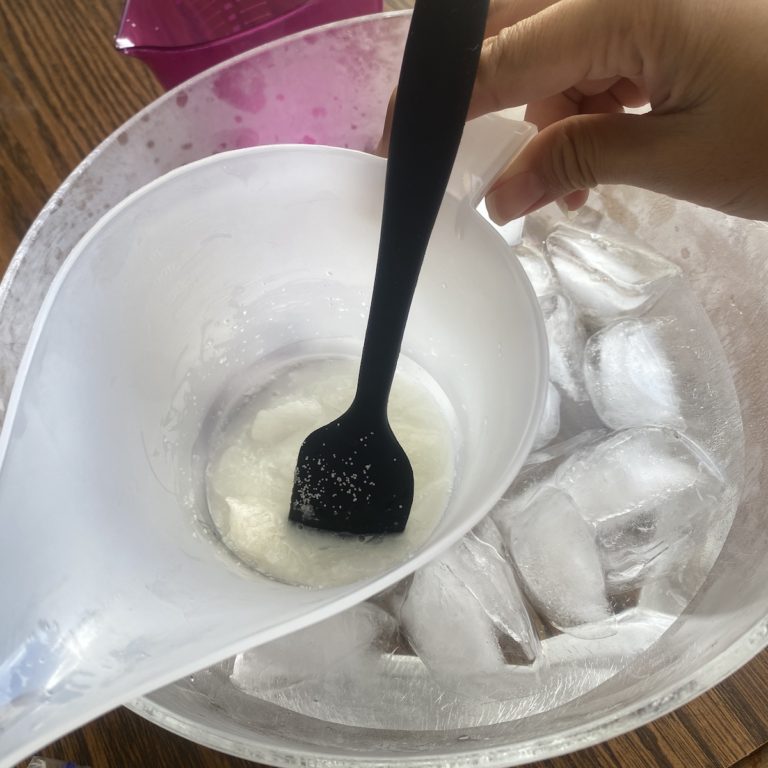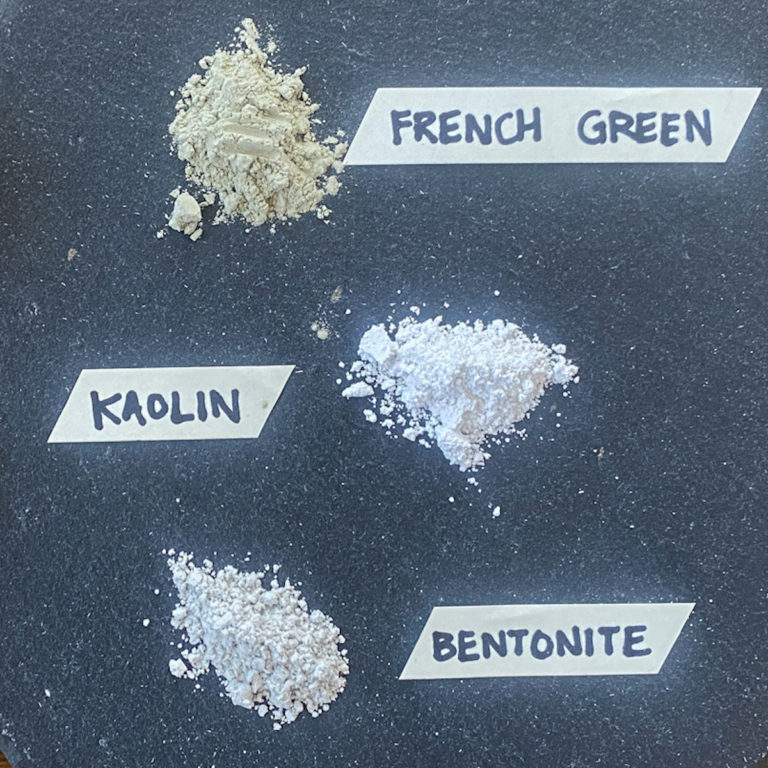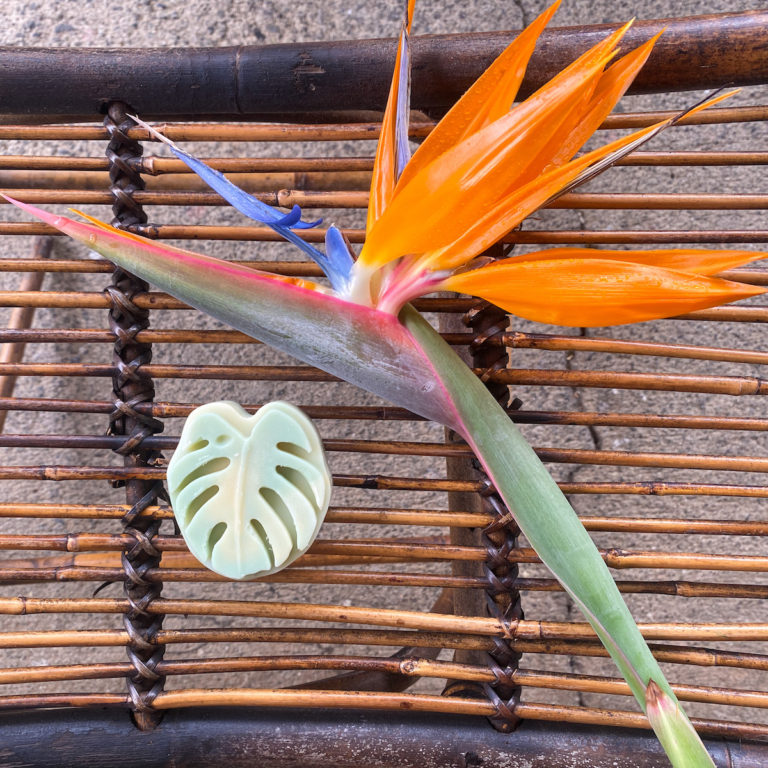Saturated vs. Unsaturated Fats in Soap Making – What You Need To Know About The Differences
Handmade soap is a cleansing, skin-nourishing, made-from-the-heart artisan product that works hard, feels good, and almost always looks and smells divine. People of all soap making skill levels can make homemade soap, as you can obtain most of the necessary ingredients at your local supermarket or online. In a nutshell, it’s made by combining lye and fat, but should you use saturated or unsaturated fat in your recipe?
Choosing more saturated or unsaturated fat in soap making alters the type of soap you get. When made with more saturated fats, the soap will lather profusely and clean well. Soaps made with more unsaturated fats make a milder soap with good cleaning ability that won’t lather as much.
In this article, you’ll learn more about both options as we take a closer look at using saturated versus unsaturated fat in your handmade soap recipe. We’ll examine the differences, as well as the pros and cons of each.
Fats in Soap Making Explained
Soap making 101 tells us that to make soap, you need lye and fat. When the two are combined (and ideally with some additional luxe additives like essential oils, natural colors, and moisturizers), a chemical reaction called saponification occurs. The end result is soap; beautiful, handmade, artisan, natural bars of rich, creamy soap.
When it comes to the recipe for handmade soap, the fat (or blend of fats) you choose is of utmost importance in the type of soap you’ll get as an end result. The fat, also referred to as an oil, butter, or fatty acid, can significantly alter your soap’s feel and performance.
You may use solid or liquid fats, saturated or unsaturated fats, plant or animal-based fats. Depending on what soap properties you’re striving for, options abound, and you’ll want to calculate your fat ratio.
One thing to note is you’re not going to use any oil or butter in your recipe that’s completely pure saturated or unsaturated fat. Rather, oils and butters are a combination of saturated and unsaturated fats, and ultimately, they’re categorized as whichever type of fat they have the majority of.
You’ll want to use a combination of fats in your recipe to balance saturated and unsaturated options for the perfect consistency and performance of the soap. You’ll understand why as we explain more below. Much like making a home-cooked recipe from scratch, it’s essential to understand your ingredients in handmade soap to know how your recipe will come together.
The Science About Fats in Your Soap Making Recipe
Let’s talk about the fundamental scientific factors that come into play with soap making and fats. Scientifically speaking, the terms “fatty acid” or “triglycerides” start coming about when you talk about fats used in soap making, and it can all sound pretty complex. However, in actuality, it’s not too complicated. Bear with us for a tiny science lesson to explain this further.
Any fat or oil used in making soap is made up of triglycerides. A triglyceride consists of a molecule called glycerol connected to three fatty acids. You could think of the glycerol as the tree trunk, and the fatty acids are its three branches.
Here’s where it gets interesting. Depending on what fat (or triglyceride) you’re talking about—olive oil, coconut oil, or animal fat, for example—the makeup of the fatty acids (or tree branches) can be very different.
Each one is made up of unique chemical composition, so it behaves differently in the soap making process and contributes to a bar of soap that looks, feels, and performs differently than one made with a different fat.
Note: These are the same fats you hear dieticians talking about. Saturated fat, unsaturated fat, triglyceride levels, etc.—the same types of fats you eat are also key ingredients to making soap.
Common Fats for Soap Making
Here are some common types of saturated and unsaturated fats used for soap making:
| Saturated Fats for Soap Making | Unsaturated Fats for Soap Making |
| Avocado butter | Apricot kernel oil |
| Cocoa butter | Argan oil |
| Coconut oil | Avocado oil |
| Coffee butter | Babassu oil |
| Kokum butter | Borage oil |
| Mango butter | Canola oil |
| Palm oil | Carrot seed oil |
| Palm kernel oil | Castor seed oil |
| Lard or tallow (animal fat, often beef fat) | Chia seed oil |
| Flaxseed oil | |
| Grapeseed oil | |
| Hemp seed oil | |
| Jojoba oil | |
| Olive oil | |
| Safflower oil | |
| Sesame oil | |
| Sunflower oil | |
| Sweet almond oil | |
| Walnut oil |
Note: Did you know that mineral oil and other oils that are derived from petroleum aren’t actually triglycerides? This means they’re not fats, and therefore it’s impossible to make soap with them.
Common Fatty Acids in Soap Making Fats
As we touched on above, each of these common fats used for soap making (and more not listed here) have unique fatty acids (the tree branches in their chemical makeup). You may also see and hear these terms as you’re exploring soap recipes and fats.
Here are common soap making fatty acids, as well as the properties they tend to create in a bar of soap:
| Common Fatty Acid in Soap Making Fats | Saturated or Unsaturated | Resulting Properties in Bar of Soap |
| Lauric acid | Saturated | Hard bar of soap, super cleanser, ample fluffy lather, can strip skin of oils and dry it out |
| Linoleic acid | Unsaturated | Silky feeling bar of soap, conditions skin |
| Myristic acid | Saturated | Hard bar of soap, good cleaning ability, moderate fluffy lather |
| Oleic acid | Unsaturated | Slippery feeling bar of soap, conditioning and kind to the skin, underwhelming lather |
| Palmitic acid | Saturated | Hard bar of soap, good cleaning ability, hardy, stable lather |
| Ricinoleic acid | Unsaturated | Softer bar of soap, moisturizing, conditioning, and gentle on skin, ample fluffy lather |
| Stearic acid | Saturated | Hard bar of soap, consistent, stable lather, bar lasts a long time |
Two Real Examples to Explain Fats and Fatty Acids
What do these fancy names of fatty acids mean when it comes to the oil or butter you choose in your soap recipe? Let’s look at two common examples to examine what we mean.
Take olive oil, a fan favorite for soapmakers everywhere. Olive oil is composed of four fatty acids, with most being oleic acid, a monounsaturated fat. Here’s the breakdown of fatty acids in olive oil:
- Oleic acid (monounsaturated): 72%
- Linoleic acid (polyunsaturated): 12%
- Palmitic (saturated): 13%
- Stearic (saturated): 3%
Next, let’s look at coconut oil, another go-to fat in soap making. Coconut oil has eight fatty acids in its composition, including six of the common ones we mentioned above. According to the Ghana Medical Journal and Essential Stuff, here’s the breakdown of fatty acids in coconut oil:
- Lauric acid (saturated): 52%
- Myristic acid (saturated): 15%
- Caprylic acid (saturated): 8%
- Palmitic acid (saturated): 8%
- Capric acid (saturated): 7%
- Oleic acid (monounsaturated): 6%
- Stearic acid (saturated): 2%
- Linoleic acid (polyunsaturated): 2%
Note: Depending on the exact sample of fat used for chemical analysis, various sources may give slightly different percentages of fatty acids, but this gives you an idea.
Saturated Fats in Soap Making: A Basic Overview
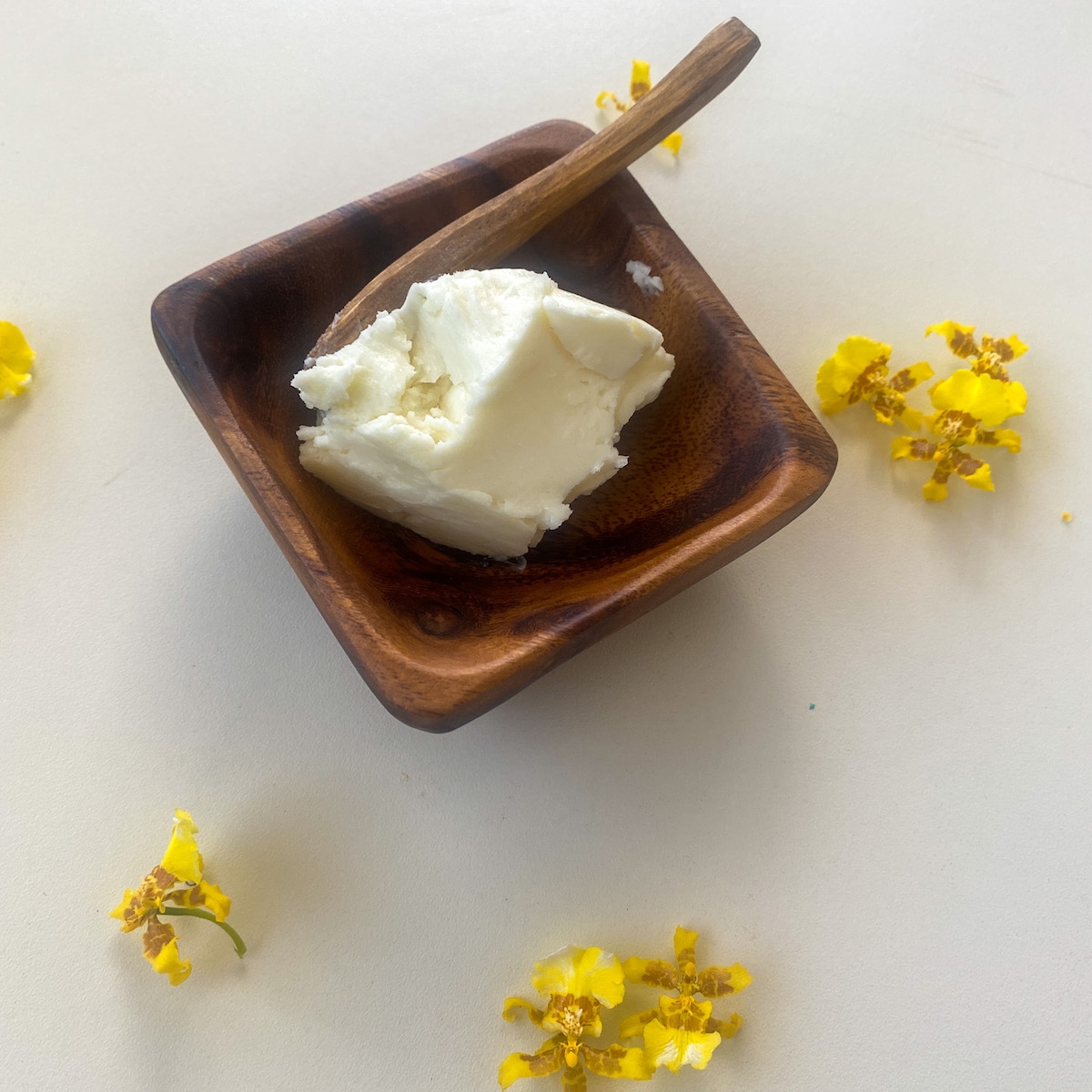
Saturated fats are those fats that usually are solid at room temperature, such as animal fats or some vegetable-derived products like coconut oil. As mentioned above, the four types of fatty acids that are considered saturated are myristic, stearic, lauric, and palmitic.
In their molecular structure, they have a pretty straightforward zig-zag look that happens to stack together very neatly before and after saponification. We know, that sounds pretty scientific, but what it means is those neat stacks of molecules result in a nice, firm, solid bar of soap.
Additionally, these types of fats accelerate trace and tend to saponify much more quickly than unsaturated fats would as if they line up straight and narrow in a quick and orderly fashion.
Saturated fats are usually more soluble in water than their unsaturated counterparts, and they make great cleansers. They create a fast-forming, bubbly lather that’s rich and full. Many types of saturated fats create hard soap that’s stable and lasts a long time.
Note: Interestingly, saturated fats that are solid at room temperature and make more solid soap are also the kind that, when consumed, can solidify in your arteries. Makes sense, right?
Pros of Saturated Fats
In this section, we’ll analyze the advantages of using saturated fats as you make handmade soap.
- Make a harder bar of soap: Depending on what you’re going for, a harder bar of soap is usually a good thing for longevity. Just like how saturated fats create firm blockages in your arteries when consumed, when used in handmade soap, they make a firm bar of soap (thanks to those straight stacks of molecules).
- Highly effective cleaning: Soaps made with saturated fats are typically more aggressive cleansers, getting the job done right by breaking up dirt, grease, and grime.
- Consistently creamy lather: Saturated fats are trusted to make you a bar of soap that lathers richly and beautifully every time.
Cons of Saturated Fats
Here are the disadvantages of using saturated fats in soap making:
- Can be too tough of a cleanser: Soaps made with saturated fats are usually tougher cleansers, so if you have very sensitive skin or are looking for something gentler, saturated fats may not be for you.
- May strip skin of oils: Since saturated fats make a tough bar of soap that’s a hardworking cleanser, they can go a little overboard and strip your skin of its natural oils. This is not ideal for your skin, so it can cause negative side effects like irritated, dry skin.
Unsaturated Fats in Soap Making: A Basic Overview
As mentioned above, when you use unsaturated fat to make homemade soap, the end result is a typically mild and soft soap. These soaps clean well and have minimal lather that’s more fluffy than it is stable and creamy. Why? It has to do with the chemical makeup of the fats and how they react during the soap making process.
Getting back to the science, unsaturated fats are usually liquid when at room temperature. The four main types of unsaturated fatty acids are oleic, linolenic, linoleic, and ricinoleic.
These are triglycerides that have a long tail and at least one double bond in one of its fatty acids. (More on these double bonds below as we explain polyunsaturated and monounsaturated fats). The double bonds make for a few kinks in the molecular structure.
While that may sound overly scientific, all it means is simply this: the molecules don’t line up as nice and easy as the stacked ones in saturated fat do. Therefore, while the molecules are all figuring out what to do as you’re making soap with them, they take a while longer to trace and saponify.
Note: In the nutrition world, unsaturated fats are known as the beneficial type of fat that can improve cholesterol levels in the blood, stabilize heart rhythms, and decrease inflammation when consumed. Who knew that healthy fat makes nice soap, too!
Pros of Unsaturated Fats
Consider these notable pros regarding the use of unsaturated fats for making handmade soap:
- Gentle on skin: Using unsaturated fat in your handmade soap recipe produces a bar that’s mild and gentle on the skin, rarely stripping it of its natural oils.
- Fluffy lather: If a nice lather is something you seek, the use of unsaturated fat in your soap will usually make for a fluffy lather. Depending on how you prefer your bubbles, this could be seen as a pro or a con, as mentioned below. While the lather is not going to be rich, creamy, or incredibly stable, it will fluff up for a decent cleansing experience.
Cons of Unsaturated Fats
Let’s check out the disadvantages of using unsaturated fats for your handmade soap:
- Softer bar of soap: While this depends on personal preference and where you plan to use your soap, typically, a softer bar of soap doesn’t hold up as well as one that’s harder.
- Less efficient as a cleanser: Soaps made with unsaturated fats are overall more gentle, and therefore less aggressive as a cleanser.
- Underwhelming lather: Unsaturated fats are known to produce soap that has minimal lather. While it will be fluffy, it’s overall unstable and not terribly impressive.
- Can go rancid more easily: The double bond in unsaturated fats makes them more likely to spoil when they oxidize (or break down). Plan to use up soaps made with unsaturated fats and keep them away from exposure to light, heat, water, or bacteria.
Polyunsaturated Fats vs. Monounsaturated Fats: What’s the Difference?
As long as you’re learning about the different types of fats used in soap making, it’s worth mentioning the difference between polyunsaturated and monounsaturated fats. They can contribute to different characteristics in your homemade soap.
Monounsaturated fatty acids (like oleic acid, for example) have a single carbon-carbon double bond in the molecule. Polyunsaturated fatty acids have at least two carbon-carbon double bonds in the molecule.
If you’re a visual learner, you’ll appreciate this graphic representation comparing polyunsaturated and monounsaturated fats, created by Amrita’s Online Labs.
Polyunsaturated fats are more likely to oxidize in your soap than monounsaturated or saturated fats. When they break down, they create stinky gases that make an unmistakable smell telling you the soap has gone rancid.
For this reason, many soapmakers minimize the percentage of polyunsaturated fats in their soap recipes. A general rule of thumb that seems to work for many is keeping the linoleic or linoleic acid below 15%.
Monounsaturated fats just have one double bond in their structure and are not as prone to oxidation. Just like any unsaturated fats, they work nicely in many homemade soap recipes.
Which Type of Fat Should You Choose?
The great news here is you really do not have to choose one type of fat over the other. Ideally, it would be best if you use a blend of both saturated and unsaturated fats in your handmade soap recipe. While it’s up to you to find the right recipe for your needs, you have many fats at your disposal.
Using a bit more saturated than unsaturated fat in your recipe is wise, as this will give you harder bars of soap that are more effective cleansers with a rich lather. Do your research to decide on a ratio of saturated to unsaturated fats that will give you the quality of soap you’re looking for. Many seasoned soapmakers swear by a ratio somewhere in the neighborhood of 60/40 hard versus soft fats.
We recommend this free online soap calculator to see what you’re working with in your recipe and how it may affect your end result.
Conclusion
As you set out to make your next (or first) bar of handmade soap, our hope is this article has helped you better understand the differences between saturated and unsaturated fats in soap making. While each carries its own pros and cons, the great news is you don’t have to choose one or the other. With the right balance, you’ll reap the benefits and combat the downsides of both types.
Happy soap making!
Sources
- Lab Muffin: Make Your Own Soap! Part 1: The Chemistry Behind Soap Making
- Red Gum Soaps: Technical Explanation
- Soap Queen: Free Beginner’s Guide to Soapmaking: Common Soapmaking Oils
- American Oil Chemists Society: Raw Materials for Soap: Saturated and Unsaturated Fats
- Felt Magnet: The Roles of Different Fats and Oils in Soap Making
- The Ultimate Guide to Soap: Fatty Acids for Beginners: Why Every Soap Maker Needs to Learn Them FIRST
- V Natural: Why There Needs to be Fat in Soap Making

